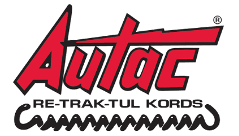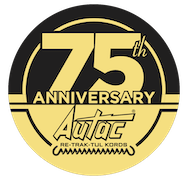Multi-Outlet Cords: Safe, Efficient Power Distribution for Homes and Workspaces
Managing multiple devices with limited wall outlets can be frustrating—especially in today’s tech-heavy environments. Multi-outlet cords offer a simple, safe, and effective solution. Whether you’re working in an office, setting up a home entertainment system, or powering tools in a workshop, these cords extend power access without clutter or overload.
In this guide, we’ll cover what multi-outlet cords are, where they’re used, key safety considerations, how to choose the right one, and why they’re a must-have for any space.
1. What Are Multi-Outlet Cords?
Multi-outlet cords are power extension cords with multiple outlets integrated into a single cord, allowing several electrical devices to be powered simultaneously from one source. They range from basic household versions with 2-4 outlets to heavy-duty industrial cords with 6 or more.
Key Features:
-
Multiple AC power outlets (from 2 to 12+)
-
Heavy-duty or standard cable insulation
-
Optional surge protection
-
Built-in safety features like resettable circuit breakers or child safety covers
Multi-outlet cords are especially useful when outlets are scarce or when you need centralized control over power distribution in a space.
2. Common Uses of Multi-Outlet Cords
Multi-outlet cords are incredibly versatile and serve a wide range of users—from homeowners to engineers. Here’s how different environments benefit from them:
a) Home Use
-
Powering TV, game consoles, and sound systems from a single outlet.
-
Charging multiple devices in bedrooms and kitchens.
-
Seasonal use for lights and decorations during holidays.
b) Office Spaces
-
Powering computers, monitors, printers, and desk accessories.
-
Managing under-desk cabling with fewer wall outlets.
c) Workshops & Garages
-
Operating power tools, chargers, and lighting simultaneously.
-
Providing mobile, flexible power access without rewiring.
d) Events & Exhibitions
-
Providing temporary power solutions for lights, booths, and audio-visual equipment.
e) Server Rooms & IT Departments
-
Organizing clean power distribution to racks and equipment.
Using a properly rated multi-outlet cord helps manage all these devices with safety and ease.
3. Safety Considerations When Using Multi-Outlet Cords
While these cords are incredibly convenient, improper use can lead to hazards such as electrical fires or overloads. Follow these key safety practices:
a) Never Overload the Cord
Every multi-outlet cord has a wattage or amp limit. Exceeding this can cause overheating or electrical failure.
b) Use Grounded Outlets
Three-prong grounded cords reduce the risk of electric shock and are necessary for many appliances.
c) Avoid Daisy-Chaining
Never plug one multi-outlet cord into another. This creates a dangerous overload loop.
d) Inspect Cords Regularly
Check for frays, exposed wires, or scorch marks. Damaged cords should be replaced immediately.
e) Keep Away from Water and Heat
Ensure cords are not exposed to water, moisture, or direct heat sources.
f) Use Surge-Protected Versions for Electronics
If you’re powering sensitive equipment like computers or TVs, use a surge-protected multi-outlet cord to guard against voltage spikes.
4. Choosing the Right Multi-Outlet Cord
Not all multi-outlet cords are built the same. Here’s what to look for when buying one:
a) Number of Outlets
Determine how many devices you’ll be plugging in. Always choose a cord with slightly more outlets than you currently need to allow for future use.
b) Cord Length
Longer cords are helpful for larger rooms, but shorter cords reduce voltage drop and tripping hazards.
c) Amp/Watt Rating
Make sure the cord can handle the total load of connected devices. For example, a 15-amp cord can handle up to 1,800 watts on a 120V line.
d) Surge Protection
Essential for electronics—look for cords with joule ratings that indicate how much surge energy they can absorb.
e) Material & Insulation
Heavy-duty, industrial-grade cords with thick insulation are best for outdoor or workshop use, while slim-profile cords work well for home and office settings.
f) Certifications
Look for UL (Underwriters Laboratories) or ETL listings to ensure the cord complies with safety standards.
5. Benefits of Using Multi-Outlet Cords
The appeal of multi-outlet cords goes beyond convenience. Here’s why they’re so widely used:
a) Space Saving
Reduce clutter by powering multiple devices without needing multiple wall plugs or adapters.
b) Cost Efficiency
One cord can replace the need for several power strips or rewiring, especially in temporary setups.
c) Mobility
Great for events, field work, or mobile stations where power needs change regularly.
d) Enhanced Organization
Help manage cable routing in an organized way—essential in office desks and entertainment centers.
e) Power Access Anywhere
Outlets don’t have to dictate where you place your desk, furniture, or equipment. With a long, multi-outlet cord, you can design your space freely.
Conclusion
Multi-outlet cords are an essential power solution for any environment—whether you’re optimizing a home office or managing equipment in a high-demand industrial space. Choosing the right one with safety in mind ensures long-term reliability and performance.
Always select a cord based on your needs, follow safety guidelines, and check for recognized certifications. With the right multi-outlet cord, you can keep your workspace safe, efficient, and future-ready.



Recent Comments